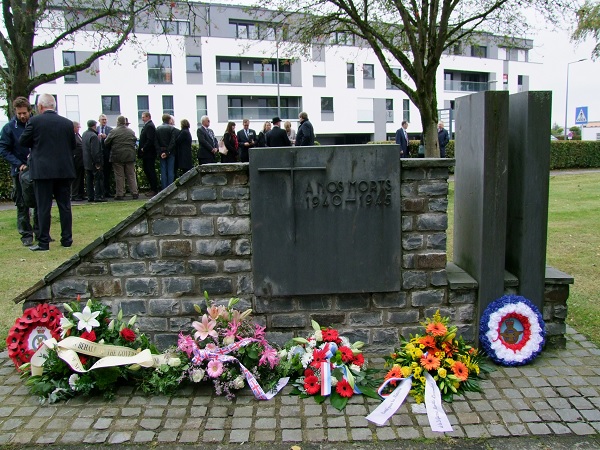 WWII memorial in Weiswampach; photo taken during the Royal Air Forces Association Luxembourg Branch's 2019 Wings weekend;
Credit: Jazmin Campbell / Chronicle.lu
WWII memorial in Weiswampach; photo taken during the Royal Air Forces Association Luxembourg Branch's 2019 Wings weekend;
Credit: Jazmin Campbell / Chronicle.lu
Chronicle.lu has teamed up with local author and tour guide David Heal of Luxembourg Battles for a new historical series.
Based on David Heal's extensive research spanning several decades (and documented in the form of place-name index cards), the series aims to present interesting local historical events and facts linked to places in (and around) Luxembourg.
Next up is a look at the history of Weiswampach. This is the most northerly town in Luxembourg – there are one or two villages that are further north but virtually unknown to most immigrants. Weiswampach itself has some features that are of historical interest, according to David.
Firstly, it may surprise readers to know that this used to be the centre of the Luxembourg ski scene. In the good old days, there was a lot of snow up here (and right down to the south for that matter). At weekends, it was a custom to come up here and rent skis and boots for cross-country skiing, and many hundreds, if not thousands, used to take advantage. It has all gone now, a victim of global warming, and the last shop that rented skis went out of business some years ago.
On a grass area beside the crossroads in the centre, there is a memorial to some GIs who died here. David reflected on his attendance at a Battle of the Bulge commemoration in 2004, held at 05:00 (when the bombardment started), and how there had been a GI veteran there with his wife. Those present laid wreaths on this memorial, and the veteran burst into tears. Someone asked him whether he knew the men commemorated. “Knew them! I am the man who survived,” he said. He explained that they had been in line exiting a forest at the back of the village and ran into a machine gun. He had been the last in line and had time to dive behind a tree. The others had been killed.
There are signposts to a couple of small lakes at the back of the village which are popular for swimming and other water sport during the summer. There is a holiday village being built there at the moment, so there may be some disruption.
Coming from the south, visitors should turn right at the crossroads and follow the sign which will lead them to a memorial to two Lancaster bombers which crashed near here at different times. A few years ago, David was with a walking group as they went past and stopped to look at it - it has every detail on it from crew names to aircraft serial numbers, he noted. One member of the group said: “That looks like the serial number of the bomber my father flew”. On their next walk, he confirmed that he had looked at his father’s logbook and it had indeed been his bomber. What had happened was that a few weeks before the crash, his father had made a crash landing after a raid and the bomber had been taken off for repairs and he and his crew given a new bomber. The bomber that had been repaired had been given to a new crew and shot down with them all being killed.
From here, visitors can make their way down into the valley to a village in Belgium called Ouren. There are several refreshment places. The interest is just outside the village and is called the “Europadenkmal”. In the summer months, there are always several tourist coaches here. The centre of interest is a small field. Visitors who walk into the field will find several information panels and three memorial stones, one each for Paul-Henri Spaak, Robert Schuman and Konrad Adenauer, the signatories to the first founding treaties of the EU. This field has been ceded by each of the three countries, Belgium, Luxembourg and Germany, which meet here. It belongs to no one. The only piece of Europe in existence. Belgium cuts the grass.
From there, visitors can go up the hill to Leithum where the church has the remains of medieval murals, and then back into Weiswampach where there are restaurants, a hotel and a supermarket.








